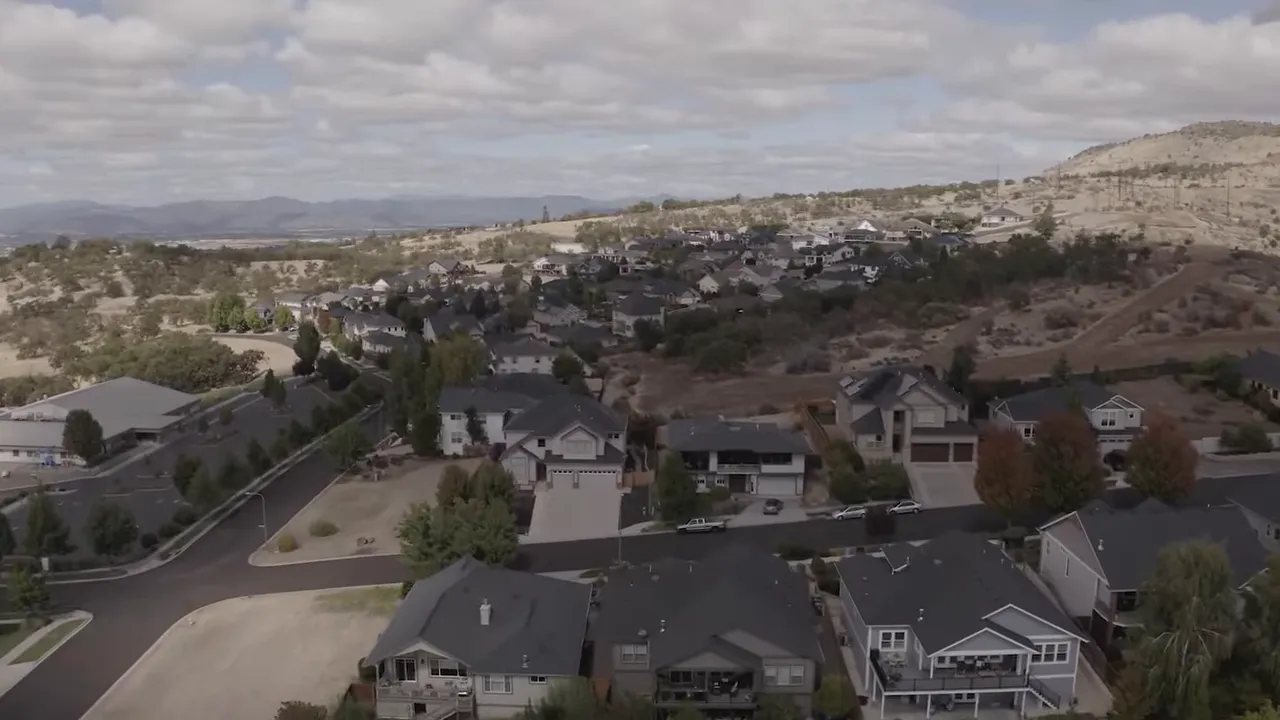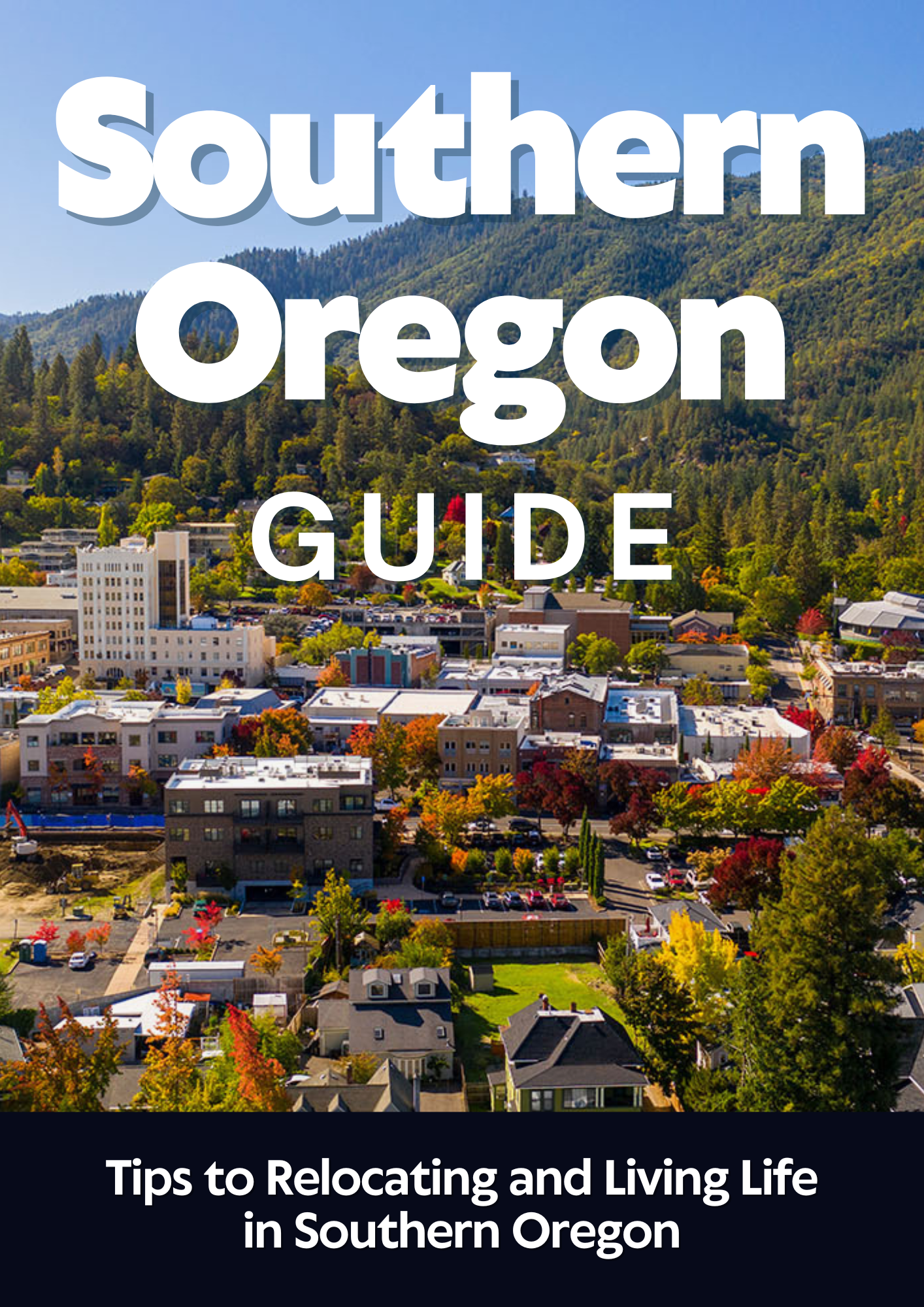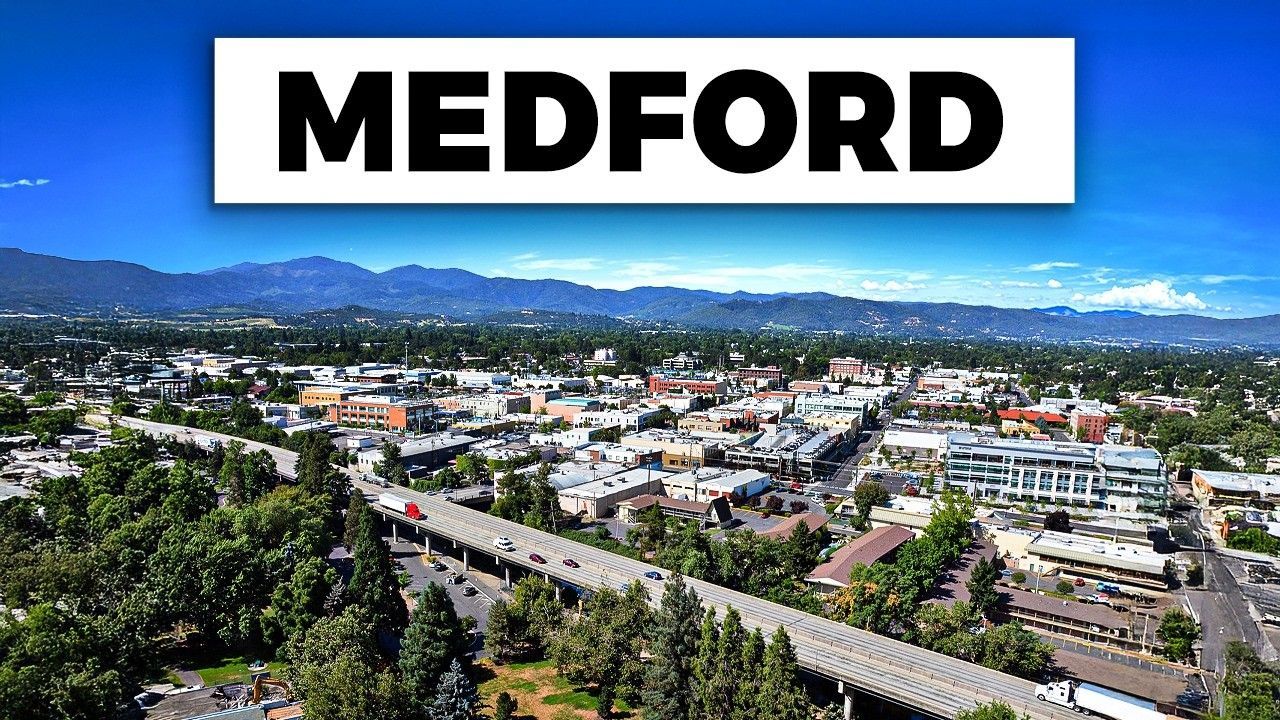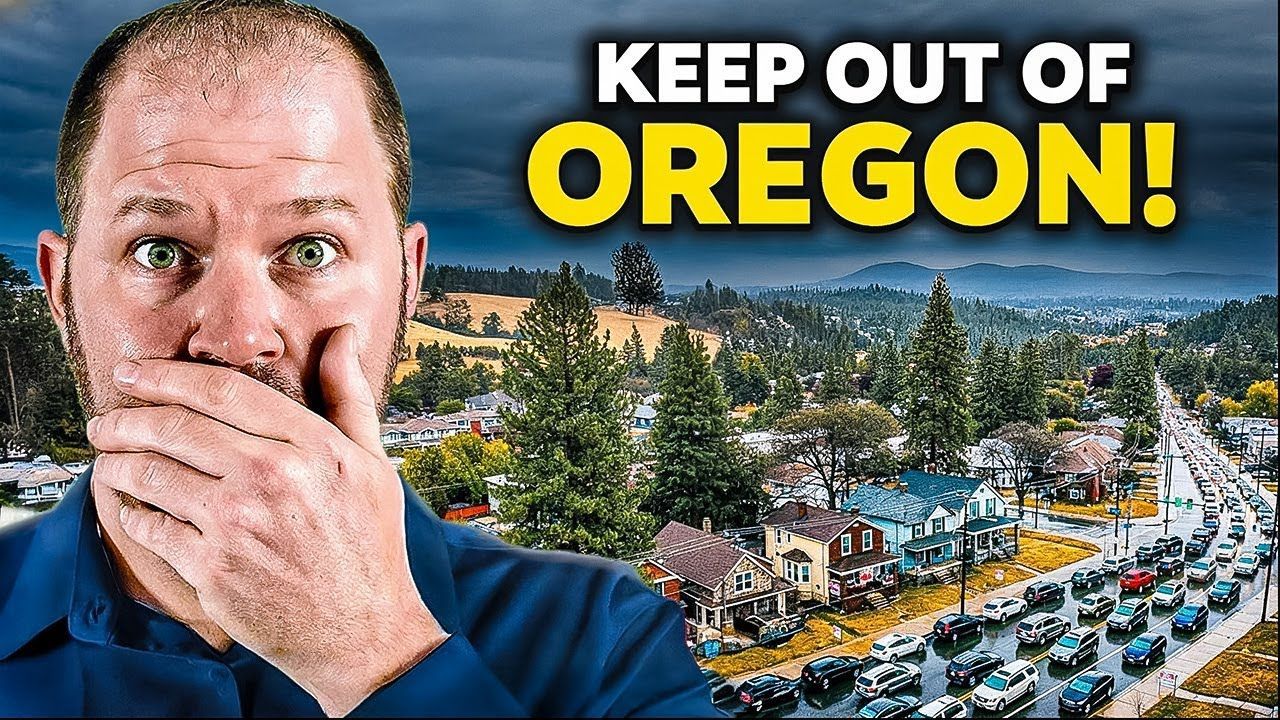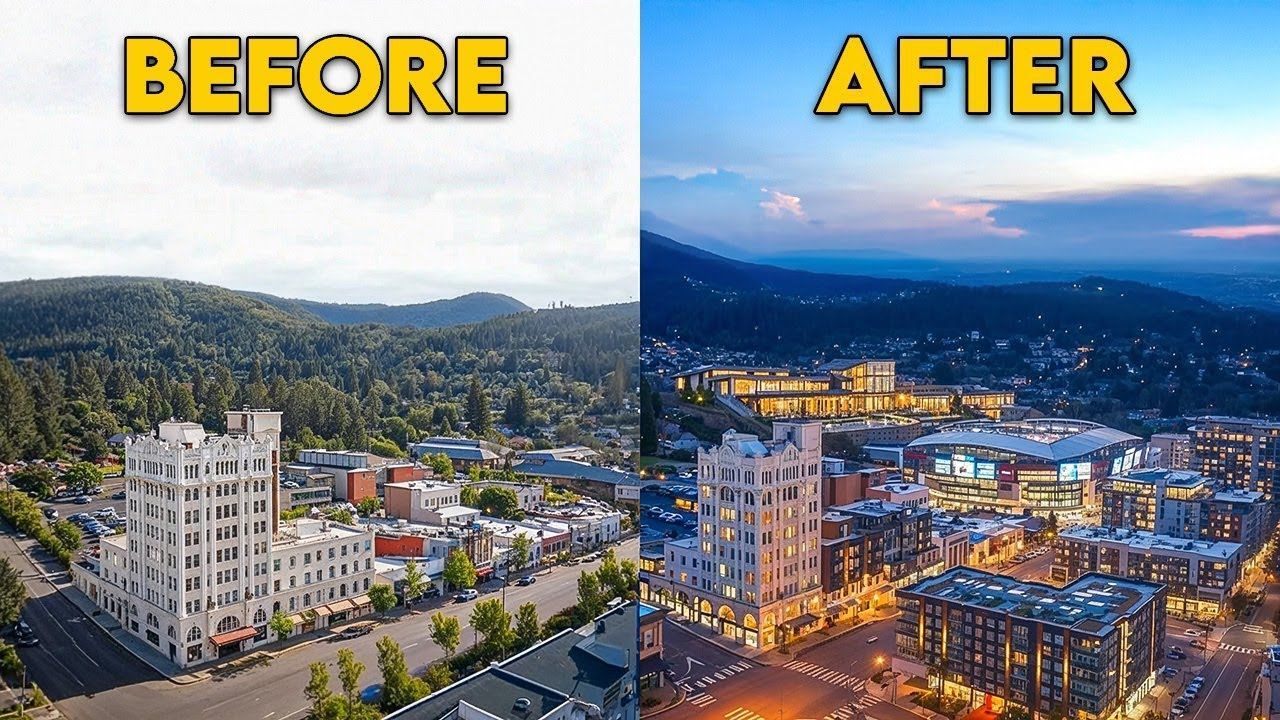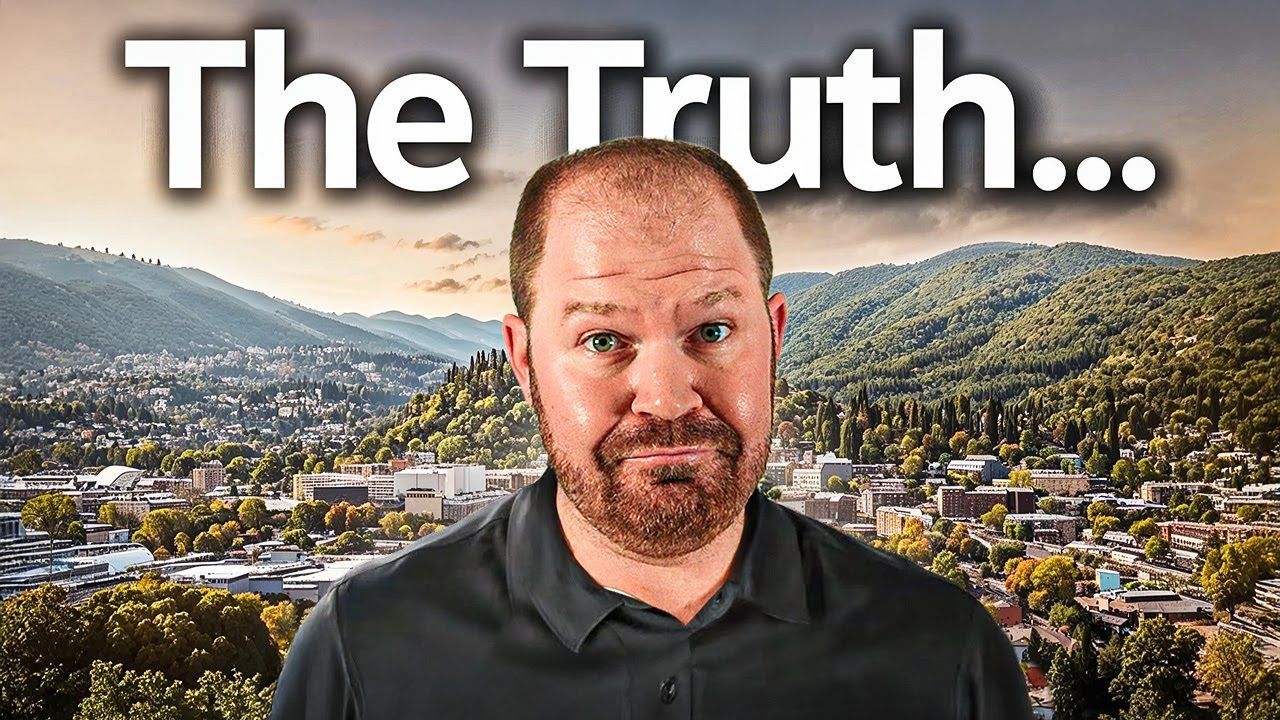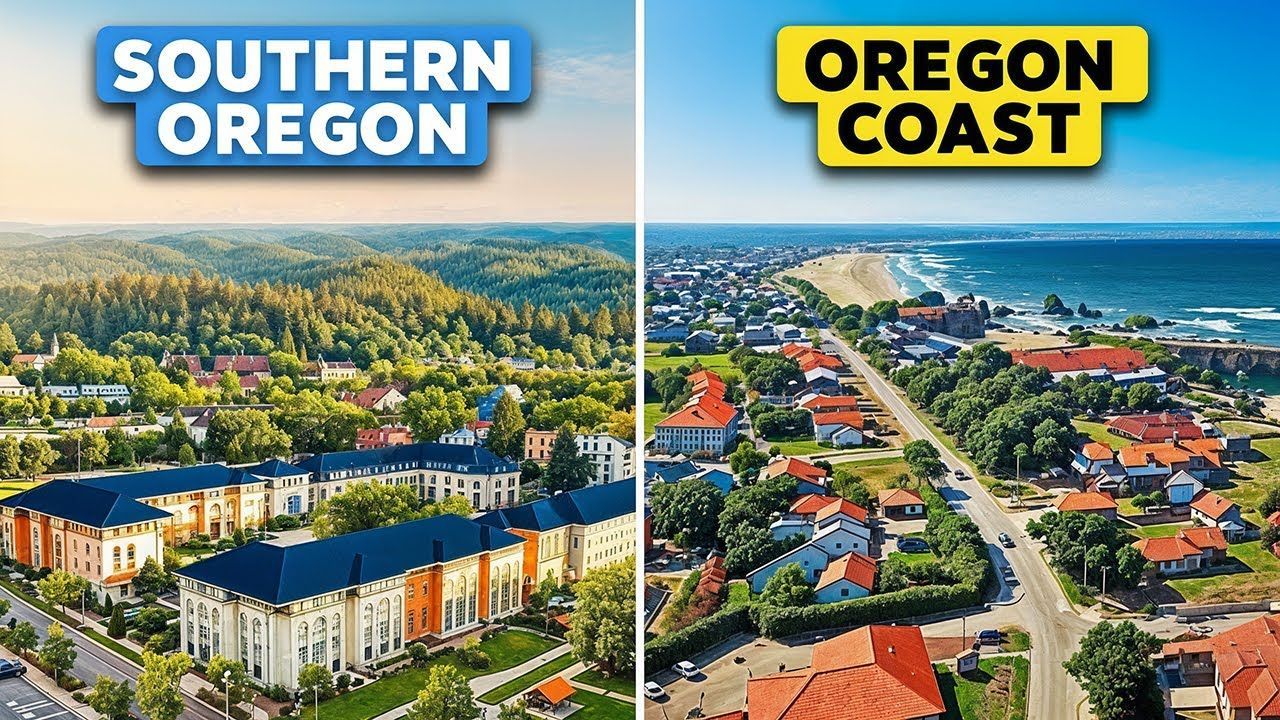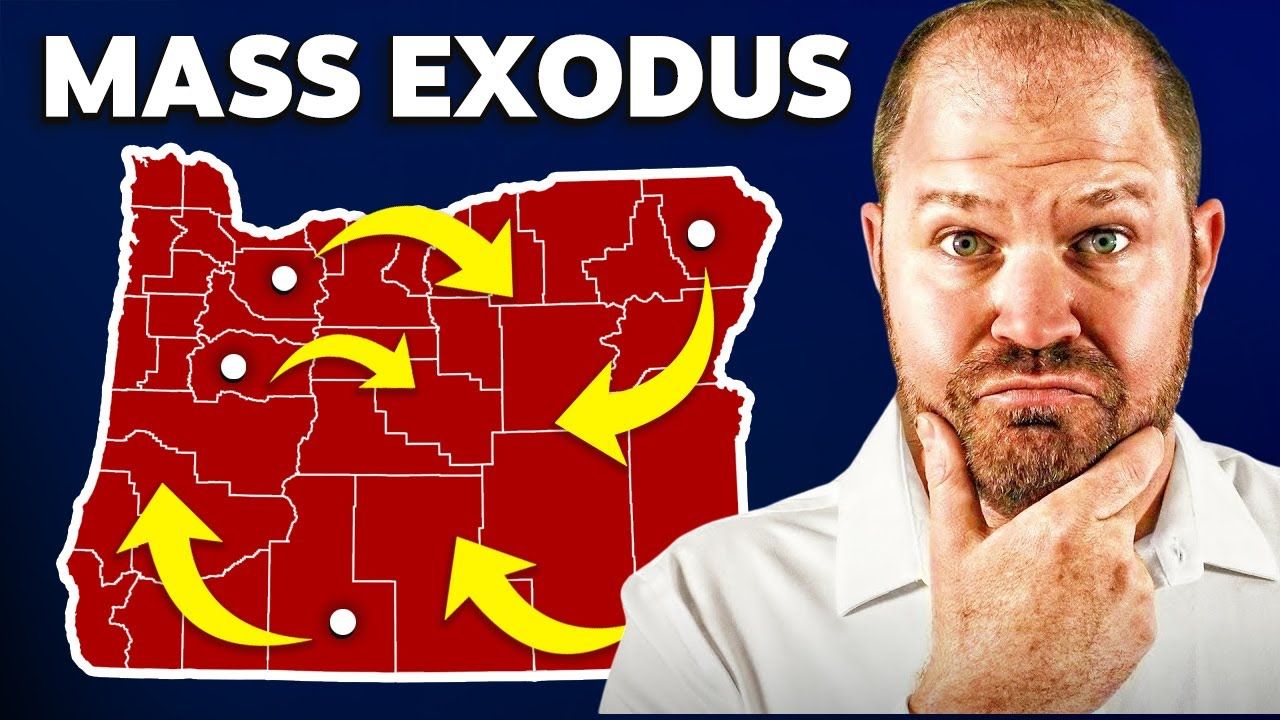Living in Southern Oregon: What 30 Years Here Taught Me
Table of Contents
- Cost of Living and Housing Affordability in Southern Oregon
- Southern Oregon Weather, Seasons, and Wildfire Risk
- Jobs, Remote Work, and Everyday Life in Southern Oregon
- Schools, Healthcare, and Essential Services in Southern Oregon
- Best Places to Live in Southern Oregon: Cities, Neighborhoods, and Small Towns
- Home Types, Land, and Homesteading in Southern Oregon
- Buying, Selling, and Investing in Southern Oregon Real Estate
- Getting Around: Airports, Traffic, and Distance to the Coast
- Lifestyle, Food, and Things to Do When Living in Southern Oregon
- Community, Culture, Politics, and Local Issues in Southern Oregon
- FAQs
Cost of Living and Housing Affordability in Southern Oregon
Cost of Living in Southern Oregon
Living in Southern Oregon usually surprises people in the best way: the cost of living is lower than most West Coast markets. Compared to Portland, Seattle, and especially the Bay Area, prices here feel reasonable. Overall household expenses in this region typically sit around 6% above the national average, which is still far below the major West Coast hubs. If your move is motivated by affordability, living in Southern Oregon is a logical choice.
Average Home Prices
Across Jackson and Josephine counties the median home price tends to hover around $450,000. That number masks a lot of variety: you can find modest starter homes, modern new construction, rural acreage properties, and well-appointed retirement homes. If you're comparing regions, that median gives you a useful benchmark for how far your budget will stretch when living in Southern Oregon.
Getting the Most House for Your Money
If you want maximum square footage for budget, focus on price per square foot. There are rare opportunities under $100 per square foot, often with properties that need work. If acreage matters, you can often find larger homes for less if you are willing to renovate. Smart buyers doing analysis can stretch budgets further when living in Southern Oregon.
Property Taxes
Property taxes vary by city and school district. As a general rule, properties outside city limits tend to have lower taxes. That means you can often be very close to town amenities while paying county-level taxes—an appealing option for many people living in Southern Oregon.
Utilities Costs
Utilities are about average. Costs depend on whether a home uses electric heating or natural gas and on the home’s efficiency. For remote workers or anyone budgeting for a move, checking local utility rates and typical monthly bills gives clarity for living in Southern Oregon.
Average Rent Prices
A typical three-bedroom, two-bath rental in a decent area usually rents around $2,000 per month. Prices fluctuate based on location, condition, and demand, but rentals generally remain competitive for investors looking to serve people living in Southern Oregon.

VIEW HOMES FOR SALE IN SOUTHERN OREGON
Southern Oregon Weather, Seasons, and Wildfire Risk
Weather & Seasons
The climate here is often described as "just right." You get four distinct seasons without the extremes of many other places. Summers are warm but not always blistering, and winters are generally mild in the valleys. That pleasant climate is a major reason people choose living in Southern Oregon over other West Coast areas.
Does it get super hot
Summers can hit the 90s regularly; very rare years spike above 110. Some summers barely touch 100. The valley sees comfortably warm days most summers, and evenings cool down, which makes living in Southern Oregon comfortable for people who dislike prolonged heatwaves.
Snow
Valley towns such as Medford and Grants Pass do not see a lot of snow. Expect a few light dustings or a few inches that usually melt within a day or two. Occasionally a heavier storm arrives, but heavy winter snows are the exception rather than the rule for those living in Southern Oregon valley communities.
Smoke
Smoke from wildfires varies year to year. Some summers are smoky, others are clear. The presence and severity of smoke are driven by wildfire locations and wind patterns, so it is worth checking historical air quality data if you are especially sensitive. Overall, smoke is not a guaranteed annual issue for those living in Southern Oregon, but it is a seasonal factor to monitor.
Fog
Fog is not common except for occasional morning fog that typically burns off by midday. The region’s temperate climate usually keeps visibility clear and skies pleasant for most of the year, which many people appreciate when living in Southern Oregon.
Wildfire Risks
Wildfire risk is complex and location dependent. Insurance is generally available, and many properties have no issues getting coverage. It is important to evaluate defensible space, local risk maps, and insurance options before purchasing. Preparing and understanding risks can make wildfire a manageable factor when living in Southern Oregon.
Jobs, Remote Work, and Everyday Life in Southern Oregon
Job Market Overview
The local job market depends heavily on what you do for work. Blue collar and service industries are plentiful, healthcare is a major employer because of the region’s sizable retirement population, and professional corporate roles are fewer than in big cities. Remote work options have increased, which means many people are choosing to relocate for lifestyle reasons while keeping jobs outside the region. Living in Southern Oregon can be ideal if your industry fits local demand or your work can be done from anywhere.
Remote Work
Remote work is feasible and increasingly popular. Broadband access, including fiber in many communities, supports telecommuting. Many people relocate specifically for quality of life while keeping jobs elsewhere, making living in Southern Oregon a strong option for remote professionals.
Internet & Cell Service
Internet connectivity is solid across much of the region, with gigabit fiber available in many neighborhoods. Cell coverage along main corridors like Interstate 5 is reliable. Some very remote spots may have limitations, so verify service for any specific lot or property before committing to living in Southern Oregon.
Schools, Healthcare, and Essential Services in Southern Oregon
Schools & Education Options
Education options include public, private, charter, and alternative schools such as Waldorf programs. School quality can vary by district and by individual school, so researching neighborhoods is key. Families frequently find suitable schools that align with their priorities when living in Southern Oregon.
Medical Care & Hospital Quality
Healthcare is strong here. The Asante Health system has a solid reputation and specialty care is available across the region. Wait times can vary depending on insurance and circumstances, but quality of doctors and facilities tends to be high for a region of this size, reassuring for those planning on living in Southern Oregon long term.
Best Places to Live in Southern Oregon: Cities, Neighborhoods, and Small Towns
Biggest Cities in the Region
Medford is the largest city with a population around 85,000, followed by Grants Pass at roughly half that size. These cities provide most major services and amenities for people living in Southern Oregon while smaller towns and rural areas deliver different lifestyle options.
Areas to Avoid
Best areas depend on lifestyle goals. If proximity to amenities matters, choose cities like Medford or Grants Pass. For quieter small-town life, there are towns like Rogue River, Shady Cove, and Jacksonville. Many buyers look for properties on the rural fringe to get both space and convenience when living in Southern Oregon.
Crime Rate
Property crime tends to be more common than violent crime. Interpretation varies, so look at local crime maps and neighborhood-specific data. Many residents find that careful neighborhood selection minimizes exposure to higher crime rates when living in Southern Oregon.
Best Neighborhoods
Neighborhood choice depends on lifestyle. Some people prefer Twin Creeks in Central Point for its community feel, while others value historic Jacksonville, Ashland’s arts culture, or Rogue River’s small-town charm. Exploring neighborhoods in person helps you find the best fit when living in Southern Oregon.
Best Small Towns
Rogue River, Shady Cove, Talent, and Jacksonville are popular choices. Each town offers its own character and amenities, and exploring them helps you decide where to settle when living in Southern Oregon.
Home Types, Land, and Homesteading in Southern Oregon
Most Common Home Types
Homes on the outskirts with half-acre to several-acre lots are common. New construction has been increasing as builders respond to housing demand, but a substantial portion of the market remains single-family homes with yard space—part of the rural-suburban appeal of living in Southern Oregon.
Buying Land & Building a Home
Building is rewarding but long, expensive, and sometimes risky. It makes sense if you have very specific design requirements. For many people, buying an existing home is the more practical route. If you do build, plan for permits, well and septic work, and construction timelines—factors that shape the experience of living in Southern Oregon.
Homes with Acreage
Homes with acreage are plentiful. Whether you want a few acres for animals or a larger parcel for farming, there are many options. Acreage properties are one of the most attractive elements for buyers enjoying the space and privacy of living in Southern Oregon.
Farming & Homesteading
Farming is practical here. Many agricultural properties include water rights and irrigation access. Off-grid homesteads also exist for those aiming for a self-sufficient lifestyle. The variety of land types makes living in Southern Oregon appealing for both hobby farmers and dedicated homesteaders.
Well Water & Septic Systems
State rules require sellers to provide a water purity test for wells before selling. Well flow tests and septic inspections are standard due diligence steps. Professionals can evaluate both systems so you know the condition of these critical systems before living in Southern Oregon.
Finding Contractors
Contractor availability varies. Having a local network helps. Many buyers rely on referrals and local real estate teams to connect them with reliable contractors for renovations and building projects while living in Southern Oregon.
Wild Animals
Rural areas host wildlife—deer, birds of prey, and other native species are common. Living in Southern Oregon means enjoying nature up close and sometimes managing encounters with wildlife depending on your property’s location.
Buying, Selling, and Investing in Southern Oregon Real Estate
Competitiveness of the Housing Market
The market experiences seasonal shifts. Spring and early summer attract more activity, and competitively priced, well-presented homes often get multiple offers. If you are planning to buy while living in Southern Oregon, expect some competition but also opportunities if you are prepared and strategic
Best Time to Buy a Home
Prices and competition dip during slow seasonal windows, such as the period between Thanksgiving and Christmas. However, the best time to buy is when you are financially ready and have a clear plan. Market timing helps, but readiness matters most when living in Southern Oregon.
Average Days on Market
Average days on market across the two counties is roughly 50 days, but well-priced, move-in-ready homes often sell within two to three weeks. Preparation and pricing are key to success whether selling or buying while living in Southern Oregon.
Investing in Rental Properties
The local rental market has demand, driven by a regional housing shortage. Multifamily and single-family rentals can perform well for investors who understand the market dynamics and manage properties effectively while serving tenants living in Southern Oregon.
Vacation Rentals & Airbnbs
Short-term rentals are plentiful. If you want a vacation rental, you will find many options. Long-term month-to-month rentals can be trickier, reflecting the general rental shortage that many regions are experiencing.
Best Way to Finance a Home
Financing options include conventional mortgages, FHA, VA, and local lenders who know the market. Working with a trusted lender who understands regional specifics makes the process smoother for people financing a move and living in Southern Oregon.
Best Way to Sell a Home Quickly
To sell fast, price and presentation matter. Good marketing exposure and a targeted listing approach attract the right buyers quickly. Homes that are priced fairly and show well typically move faster in this region where demand outpaces supply in many segments of the market.
Finding Off-Market Homes
Off-market deals often surface through local networks and word of mouth. Building relationships with agents, neighbors, and local professionals is the most effective way to uncover properties that are not publicly listed for those interested in living in Southern Oregon.
Getting Around: Airports, Traffic, and Distance to the Coast
Airport Access & Flight Options
Regional air service connects to major hubs: Portland, Seattle, San Francisco, Los Angeles, soon San Diego, Denver, Salt Lake City, Las Vegas, and Phoenix. The local airport makes travel straightforward for both short trips and longer connections, so living in Southern Oregon does not mean being remote from travel options.
Easy to get in and out
Getting through the airport is typically fast and simple, especially with TSA PreCheck. For many travelers you can arrive about an hour before your flight and move through security easily. This convenience is a nice perk for those living in Southern Oregon who like to travel frequently.
Traffic
Traffic is rarely a major problem. Peak slowdowns happen near shopping centers and specific intersections, but compared to major metro areas, congestion is minimal. For most people moving from big cities, the absence of daily gridlock is a major perk of living in Southern Oregon.
Distance to the Coast
The coast is reachable in a few hours. Depending on your starting point, Brookings is about two hours from Grants Pass and roughly two to three hours from Medford. That drives-in-a-day access makes weekend beach trips a realistic part of life when living in Southern Oregon.
Lifestyle, Food, and Things to Do When Living in Southern Oregon
Things to Do (Outdoors & Culture)
Outdoor recreation is one of the biggest draws to living in Southern Oregon. Hiking, biking, fishing, hunting, camping, and golf are abundant. Arts and culture are strong too, with galleries, festivals, and a lively theater scene. If you like a mix of outdoor activity and cultural events, this region offers a balanced lifestyle that keeps most people busy year-round.
Restaurants and Dining
Ashland stands out for fantastic dining, but the region overall has a growing and diverse restaurant scene. From farm-to-table options to casual brewpubs, dining is a pleasant surprise for many who move here and start living in Southern Oregon.
Activities for Kids
Outdoor life is naturally kid-friendly: trails, parks, rivers, and neighborhood spaces make it easy to keep children active and engaged. Families frequently choose living in Southern Oregon to give kids safe outdoor play and exploration opportunities.
Activities for Retirees
Retirees find plenty to do: golf, wineries, theater, volunteer work, and outdoor recreation. The Shakespeare Festival in Ashland and numerous vineyards make cultural life rich for those choosing to retire and live in Southern Oregon.
Best Outdoor Activities for Families
Families enjoy hiking, biking, skiing in the mountains, camping, and trips to the dunes for motorsports. The region’s variety keeps outdoor adventures accessible, which is a big reason families choose living in Southern Oregon.
Golf Courses
There are several excellent courses, including Centennial, Eagle Point, and Rogue Valley Country Club. Golfers will find quality public and private options for regular play when living in Southern Oregon.
Fishing & Hunting
Fishing the Rogue River is a legendary experience, and blacktail deer hunting draws many visitors. Elk hunting is less prominent than in other parts of the state, but overall the outdoor sports scene supports a broad range of interests for people living in Southern Oregon.
Breweries & Wineries
The region has a flourishing wine and beer scene. Favorites include Del Rio, Hummingbird, Relic, and Dancing. Breweries and new taprooms are appearing across towns, contributing to a lively craft food and drink culture for people enjoying living in Southern Oregon.
Arts & Entertainment Scene
Ashland is nationally recognized for the arts, and other communities host concerts and festivals such as the Britt Festival. The cultural calendar is full, which makes living in Southern Oregon attractive to people who want both outdoor access and vibrant arts offerings.
Community, Culture, Politics, and Local Issues in Southern Oregon
Downsides of Living in Southern Oregon
Downsides depend on personal priorities. If you prefer extreme year-round warmth or dislike four seasons, the climate could be a downside. If you want a dense urban environment or a hyper-competitive corporate job market, those may be limiting factors. Most downsides are context specific—what feels like a con to one person is often the exact reason another person moves here.
Upsides of Living Here
The common positives people cite are affordable housing compared to other West Coast markets, excellent climate, abundant outdoor recreation, and a slower pace of life. Put those together and you get a compelling combination for families, remote workers, and retirees choosing living in Southern Oregon.
Political Climates
Politics vary county to county. Ashland leans liberal, while many other parts trend more middle of the road or conservative. Jackson County is fairly balanced overall. If political environment matters to you, it is easy to find communities that match your preferences when living in Southern Oregon.
Why People Move Here
People move for the climate, the lower cost of living compared to coastal cities, outdoor recreation, and lifestyle. Many are looking for an alternative to California or the saturated markets up north. The mix of temperate climate, affordability, and access to nature is a big reason people choose living in Southern Oregon.
Cannabis Farms
There were many cannabis farms during the industry’s boom years, but the number has decreased significantly since 2019 and 2020. While they still exist, they are not as ubiquitous as they once were for people now living in Southern Oregon.
Homelessness
Local policies have influenced homelessness in recent years. Some municipalities enacted camping bans that affected visible encampments. The situation has evolved and is less prominent in certain towns than it was in the recent past, yet it remains an issue that towns manage differently across the region.
Culture Compared to Northern Oregon
Culture and climate differ markedly from northern Oregon. Ashland brings a strong arts scene, but overall the region has its own identity that is distinct from Portland and the Willamette Valley. If you want a different pace and cultural mix, living in Southern Oregon delivers a unique experience.
HOAs and New Developments
HOAs exist but are not dominant. Older neighborhoods often lack HOAs, while some newer subdivisions include them. If avoiding an HOA matters to you, there are plenty of options that let you enjoy life without that extra layer of rules while living in Southern Oregon.
Sense of Community
Smaller towns often have a strong small-town feel where neighbors know one another and local events bring people together. This close-knit community vibe is a major draw for many who choose living in Southern Oregon.
Retiring in Southern Oregon
Many retirees relocate here and stay. The combination of climate, culture, medical care, and recreation makes it an excellent retirement choice. The area's slower pace and accessible amenities create an inviting environment for retirement living in Southern Oregon.
VIEW HOMES FOR SALE IN SOUTHERN OREGON
FAQs
What makes living in Southern Oregon different from the Portland area?
The climate is drier and warmer, population density is lower, housing is more affordable, and the culture is distinct. You will find a combination of outdoor recreation and small-town community vibes that differs from the urban scene in Portland.
How often should I expect smoky summers when living in Southern Oregon?
Smoke frequency varies by year. Some summers are clear, while others have notable smoke depending on wildfire activity and wind. Check historical air quality data for the specific town you are considering to get a clearer picture.
Is it easy to find homes with acreage?
Yes. Properties with half-acre to multiple acres are common outside core city limits, making it straightforward to find homes with yard space or agricultural potential when living in Southern Oregon.
Are there good hospitals and specialists nearby?
Yes. The Asante health system and other local providers offer specialist care and hospital services that are well regarded for a region of this size.
Can I work remotely while living in Southern Oregon?
Absolutely. Many areas have strong internet infrastructure, including fiber in many neighborhoods. Remote work is a common reason people relocate to the region.
How competitive is the housing market right now?
Competition varies seasonally. Spring brings more buyers and multiple-offer situations for well-priced properties, but opportunities exist year-round for prepared buyers.
Is wildfire insurance difficult to get?
Most properties can get insurance. A small number of homes in high-risk zones may face challenges, so consult an insurance professional and review local risk data before purchasing.
What are property taxes like?
They vary by city and school district. Generally, county properties outside of city limits have lower taxes than homes inside city boundaries.
Are there good schools?
Yes. There are strong public and private options, charter schools, and alternative programs. Quality differs by district, so research is important for families.
How far is the coast from inland towns?
Coastal towns like Brookings are about two hours from areas near Grants Pass and roughly two to three hours from Medford, making beach trips feasible for weekend getaways.

Buying Southern Oregon
At Buying Southern Oregon, we are a dynamic team dedicated to helping you achieve your real estate goals. Combining Brian Simmons’ deep market expertise and Josh Berman’s strong negotiation skills, we provide personalized service and local knowledge to ensure a seamless and rewarding experience. Whether you’re buying, selling, or relocating, we’re here to guide you every step of the way and make your Southern Oregon real estate journey a success.

